Aurinia saxatilis
Also known as basket of gold, rock goldentuft, and yellow alyssum, Aurinia saxatilis is an enchanting perennial that will charm your garden with an explosion of color.
The stunning yellow flowers will be on full display for up to six weeks in late spring and early summer.
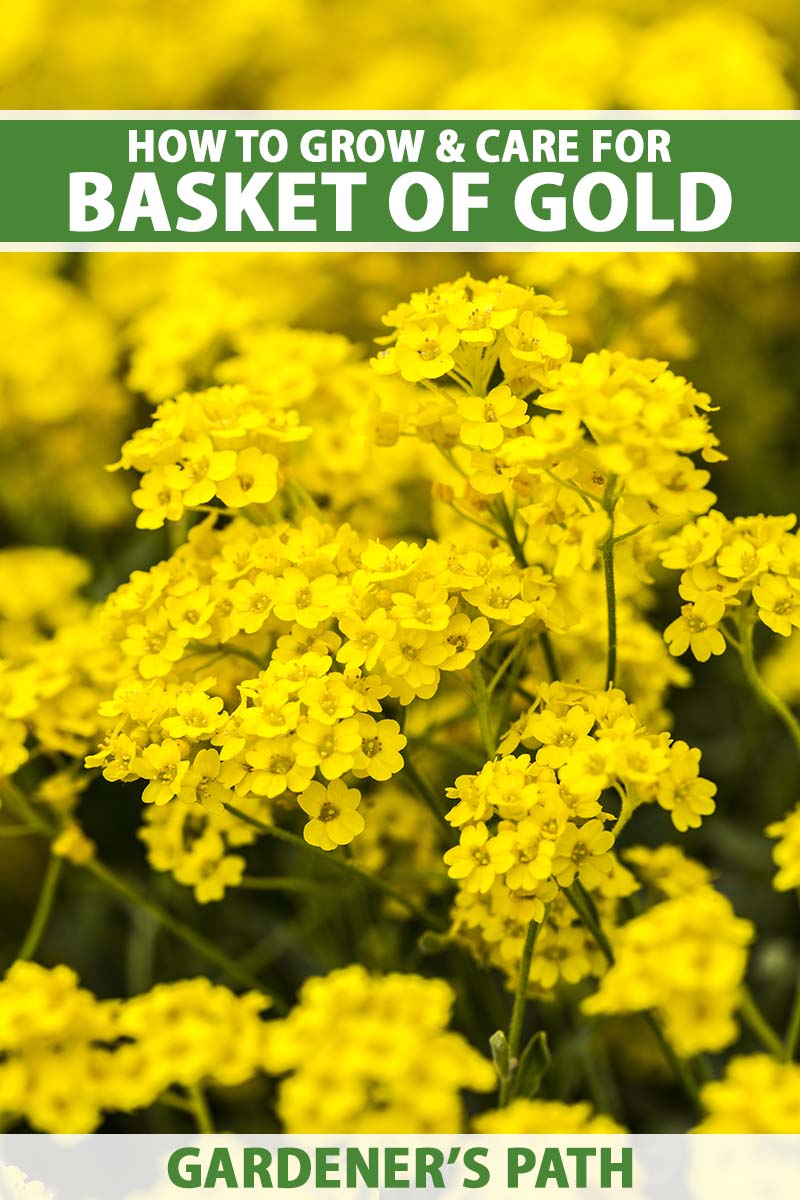
We link to vendors to help you find relevant products. If you buy from one of our links, we may earn a commission.
If you live in USDA Hardiness Zones 3 through 7, I encourage you to add this charming ornamental to your landscape.
Its popularity and gorgeous flowers earned this plant the Royal Horticultural Society’s Award of Garden Merit, and it’s not hard to see why!
Often used in rock and pollinator gardens, this mat-forming, low-growing plant has a creeping habit. After your basket of gold has finished flowering, its evergreen foliage serves as an attractive ground cover year-round.
If you’re here reading this article, I’m delighted to share with you what’s ahead. A. saxatilis, like many types of alpine plants, are incredibly unfussy and almost indestructible.
They can be grown by beginner gardeners and thrive – my favorite kind of plant!
What You’ll Learn
What Is Basket of Gold?
Aurinia saxatilis is native to the rocky and mountainous regions between central and southeastern Europe and Turkey. It thrives in sloping, shallow, and dry conditions with low humidity.

This species belongs to the Brassicaceae, or mustard and cabbage, family. It’s closely related to sweet alyssum, a popular and fragrant annual with similar qualities that is also suited to growing in containers.
With a shallow root system that allows it to thrive in its native environment on the sides and slopes of mountains, basket of gold will grow well in shallow containers on your patio, or between stones in a well-draining rock garden.
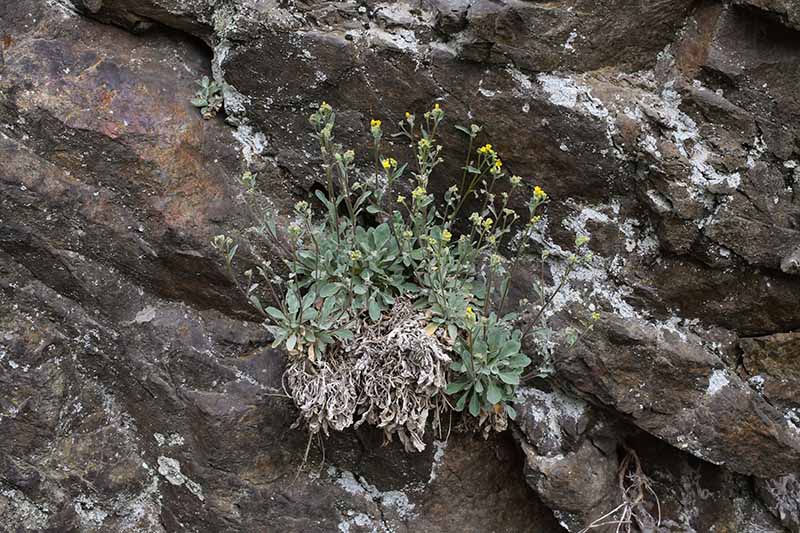
Shallow containers allow the soil to dry out quickly, which is a benefit for this plant.
Like many plants native to alpine areas, A. saxatilis is drought tolerant and thrives in nutrient-poor, well-draining soil with full sun. This gorgeous evergreen has a clump-forming habit and it can be planted to spill over the sides of containers and garden beds.
Some say the blooms smell like aged cheese and honey. Nevertheless, bees as well as some varieties of butterflies and moths love this plant. If you’ve grown it before, I’d love to hear what you think of the fragrance in the comments below!
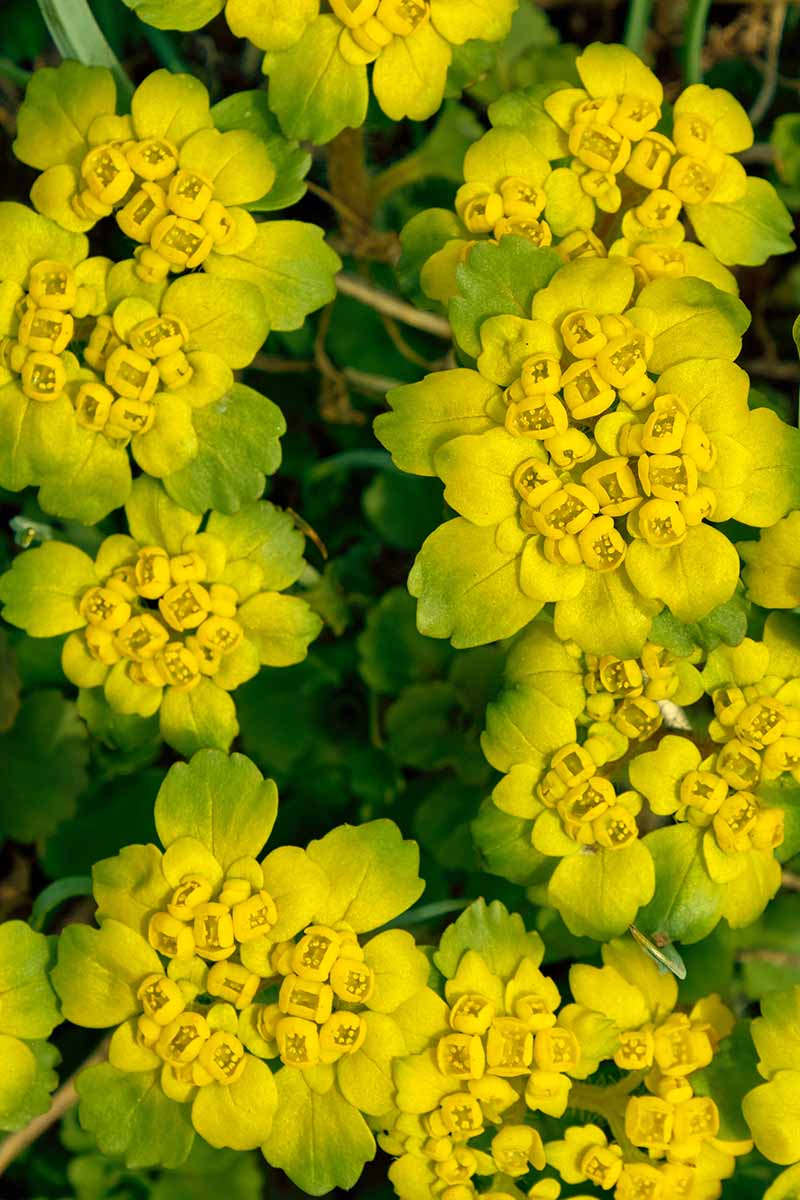
Sometimes described as Alyssum saxatile, it was recently reclassified as a member of the Aurinia genus. This species can reach a height of 12 inches and spreads 15 to 20 inches, with a mounded shape.
Propagation
A. saxatilis can be propagated from seed or by rooting softwood cuttings. If you’re short on time, this plant is usually available at garden centers in the late winter or early spring.
From Seed
If you’re harvesting seeds directly from an existing basket of gold plant, this should be done in the fall. Once harvested, keep your seeds safe by storing them in a cool, dry place.
Seeds can be started indoors approximately six to eight weeks before your last average frost date. Use seed-starting trays and place them in a spot that receives direct sunlight.
The trays should be filled with a mixture of three parts pre-moistened sterile seed-starting mix and one part horticultural sand to ensure superior drainage.
Sow two seeds per cell to increase the chances of germination. Place the seeds on the surface of the soil and press down gently with your finger on each one to ensure soil contact. The seeds should not be covered with soil, as light is needed for them to germinate.
Keep the soil evenly moist by bottom watering as needed. While you’re waiting for your seeds to germinate, the soil should stay consistently moist but not wet. Germination should take place within one to two weeks.
After your seeds have sprouted, allow them to grow until the seedlings have produced three to four leaves. This should take about six weeks.
Unless you’re growing under a grow light, make sure you are turning your seed tray twice a week, as the seedlings will lean towards the sun when they’re growing.
During this time, the plants’ roots will begin to form, and it’s important to start decreasing the moisture levels in the soil so the roots won’t rot.
Keep bottom watering your seedlings but allow four or five days between waterings. If your plants wilt from soil dryness, increase your watering schedule.
Thin the weakest seedling out of each cell and move those to your compost bin. Keep the healthier seedling in each cell to grow indoors for a total of 10 weeks.
Move your seedlings outdoors to allow them to harden off, increasing the total amount of time they spent outdoors each day over the course of about two weeks before transplanting into their permanent location within your landscape as described below.
If you’d like to plant your seeds directly into your garden, you can do this after the last frost of the season.
Select a sunny spot that receives at least six hours of sunlight per day, press the seeds into the surface of the soil spaced four inches apart, and water them in well.
Maintain moisture while the seeds germinate and as the plants become established.
From Cuttings
Basket of gold is a woody ornamental plant, and new growth is best for taking cuttings. Clip softwood stem tips that are at least two inches long in the late spring or early summer.
Select sterile four-inch nursery pots with good drainage for propagation, and fill them with a low-fertility medium that drains well. Popular propagation mixtures combine one part peat and one part either perlite or sand.
Remember: fresh cuttings are tender and will dry out quickly. After you’ve harvested the cuttings, immediately treat the cut ends with a root-stimulating compound and tap to remove any excess.
Using a rooting compound is optional, but it will increase the likelihood of successful rooting.

This rooting compound gel from Midas Hydro will work wonders. It’s available in four-ounce pots via Amazon.
Insert the cut ends of the stems about a quarter-inch deep into the rooting medium. If you want to root multiple cuttings at once, you can place up to two stems within each pot to maximize your space.
Place in indirect, bright light and keep the potting medium moist but not wet. Roots should begin to grow within about three weeks.
You can check the progress of the root development by tugging gently on your stem cuttings – if you feel resistance, your cuttings are rooting!
After about five weeks, they should be ready to place in their permanent location in your landscape as described below.
Transplanting
Basket of gold plants are a popular choice for gardeners and are usually readily available at garden centers in fall or early spring. Both of these seasons are ideal times to transplant rooted cuttings, seedlings, or nursery starts.
The soil in the planting area should be well-draining and a bit on the dry side.
When you transplant, dig a hole only slightly bigger than the pot your plant is currently growing in. Remove the plant from its container and insert it in the hole. Backfill with well-draining soil and water thoroughly.
Plants should be spaced at least four inches apart, to encourage a healthy spread.
If you live in Zones 8 and up, plant your A. saxatilis in the fall and enjoy blooms the following spring. You’ll want to remove the plants from your landscape right when summer begins, as they will visibly suffer in the rising summer temperatures.
A quick tip on mass planting: plant five to six basket of gold transplants in groups, spaced about four inches apart, for a dramatic mass planting in your landscape. When mid-spring rolls around, you’ll be dazzled by the beautiful golden ground cover.
How to Grow
In its native environment, basket of gold is most happy in rocky, poor soil in full sun. But this species can adapt to many different soil types, as long as the soil is well-draining.
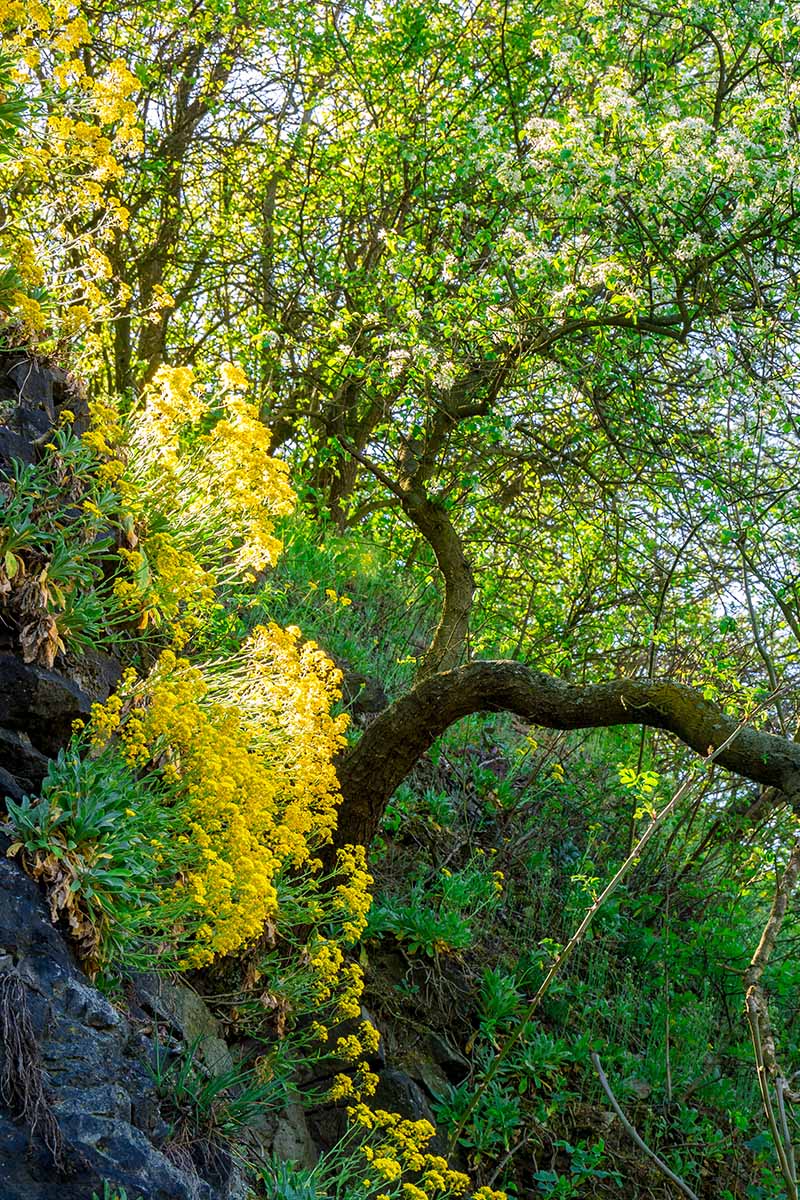
After you’ve planted your basket of gold in your landscape, you should water it about once a week in the absence of rain for the first six months until established.
If you’re growing your plant in a container, make sure there is a drainage hole in the pot to ensure that water drains quickly and thoroughly.
Unglazed ceramic or terra cotta pots would work well as containers because they are porous and allow water to evaporate quickly. Shallow containers are also fine for this plant.
Plan to water container-grown basket of gold about once every two weeks in the absence of rain. Alpine plants are similar to succulents in their watering needs, so allow the soil to dry completely before watering again.
When you water, make sure you soak the soil to the point that water flows from the drainage holes in the pot.
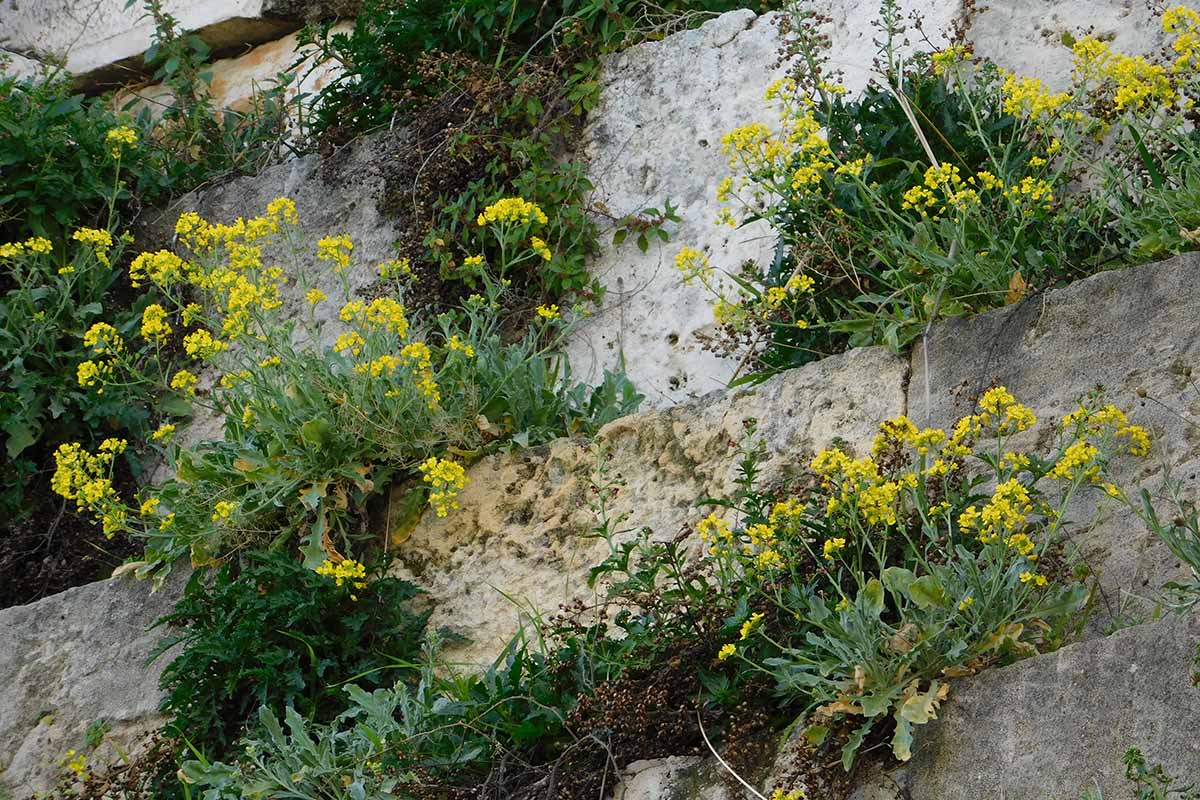
Planting in clay-heavy soil with poor drainage will lead to root rot and growth problems. If your garden is clay-heavy, consider growing your basket of gold in a 10- to 12-inch container with good drainage instead of in the ground.
A. saxatilis does not like high heat or humidity, though it loves the sunshine. If you’re trying to grow this plant in Zone 7 and up, give it some afternoon shade to keep it from getting too hot.
It also needs good airflow, so make sure to follow the recommended spacing guidelines.
Under the right conditions, this plant grows quickly, reaching its mature size in two to five years in regions where it may be grown as a perennial.
There is no need to fertilize this plant as it thrives on neglect!
Although it isn’t essential, you can feed your basket of gold with slow-release fertilizer at the beginning of spring. This will give the blooms a boost and help them look their best through the rest of the season.
Use a balanced granular fertilizer that will feed your plant for three months. You don’t need much – I recommend a small handful scattered around the base of the plant.
Try this 4-4-4 (NPK) product that’s available from Burpee in four-pound bags.
Growing Tips
- In Zone 7 and below, provide 8 hours of sun, in Zone 8 and up, 6 hours is sufficient.
- Soil should be well draining – this plant is prone to root rot in overly moist conditions.
- Water once a week until well-established within your landscape. If planted in a container, water every 2 weeks in the absence of rain.
Pruning and Maintenance
Many gardeners believe A. saxatilis plants look best when they are rounded and compact. This species is pretty low maintenance, which is lovely, but it does benefit from some annual pruning.
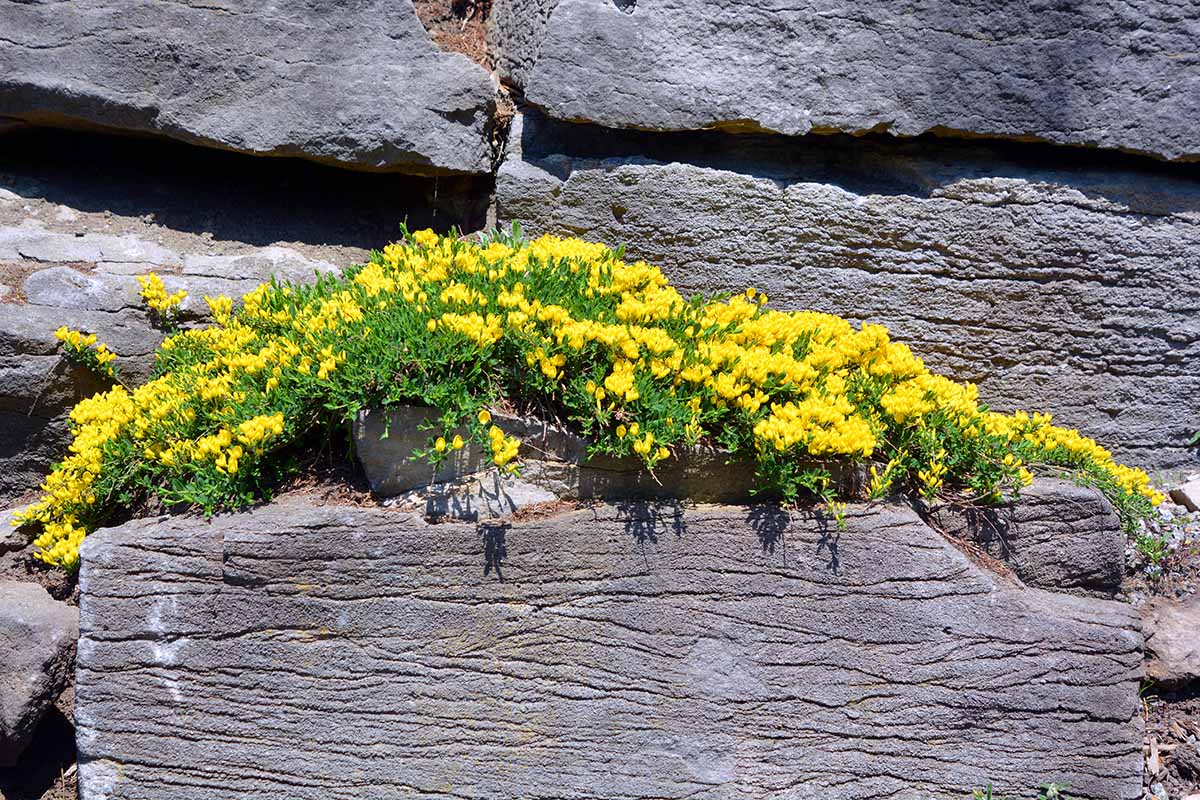
In order to maintain that rounded look, use clippers to cut the plant back hard to about half its size in late fall. If you don’t mind the mat-forming natural spread of this plant, there is no need to shear it.
Many gardeners in the southern United States treat their basket of gold as an annual. As mentioned previously, if you live in Zone 8 and up, plant your A. saxatilis in the fall and enjoy blooms the following spring.
Annuals should be removed from the garden when the foliage begins to fade and die back in the summer heat.
Cultivars to Select
You can generally find seeds and transplants for the species plant online or in local nurseries. If possible, try and purchase seeds from an heirloom seed seller or nursery.
Open-pollinated heirloom varieties are true to type, ensuring you get exactly what you’re looking to grow. You can find heirloom basket of gold seeds from Eden Brothers.
You might also find A. saxatilis in flower seed mixes.
This perennial flower seed mix from Botanical Interests includes basket of gold as well as 18 additional flowers that bloom from spring to fall.
A few popular cultivars are also available to choose from.
The most common cultivar frequently sold in garden centers is ‘Compacta.’
It’s a mounding, compact variety that’s slightly smaller and shorter than the species plant, with bright yellow flowers. It grows approximately eight inches high with a 12-inch spread.
‘Citrina’ is a popular cultivar that produces bright, lemony yellow flowers. The leaves are a grayish green, and they will provide welcome texture within your rock garden. This plant grows 12 inches tall and 18 inches wide.
I love the interest that variegated leaves can bring to the landscape. ‘Dudley Nevill Variegated’ is a variety with beautiful creamy yellow flowers.
Instead of slick green foliage like the species plant, this cultivar has olive-green leaves dappled with irregular white variegation on the tips. It grows 12 inches tall and up to 18 inches wide.
‘Summit’ produces gray-green leaves and bright yellow flowers.
This compact variety reaches a height of six to eight inches, with a spread of 12 to 18 inches. Plants are available from Nature Hills Nursery.
‘Sunny Border Apricot’ is a cultivar with creamy pastel yellow flowers with hints of apricot.
The petal color is much softer than that of the species plant and will work well in gardens as an accent piece, versus a more vibrant main attraction. It grows up to 12 inches tall and 24 inches wide.
Managing Pests and Disease
Luckily, this plant isn’t prone to serious pest or disease problems. It’s also deer resistant.
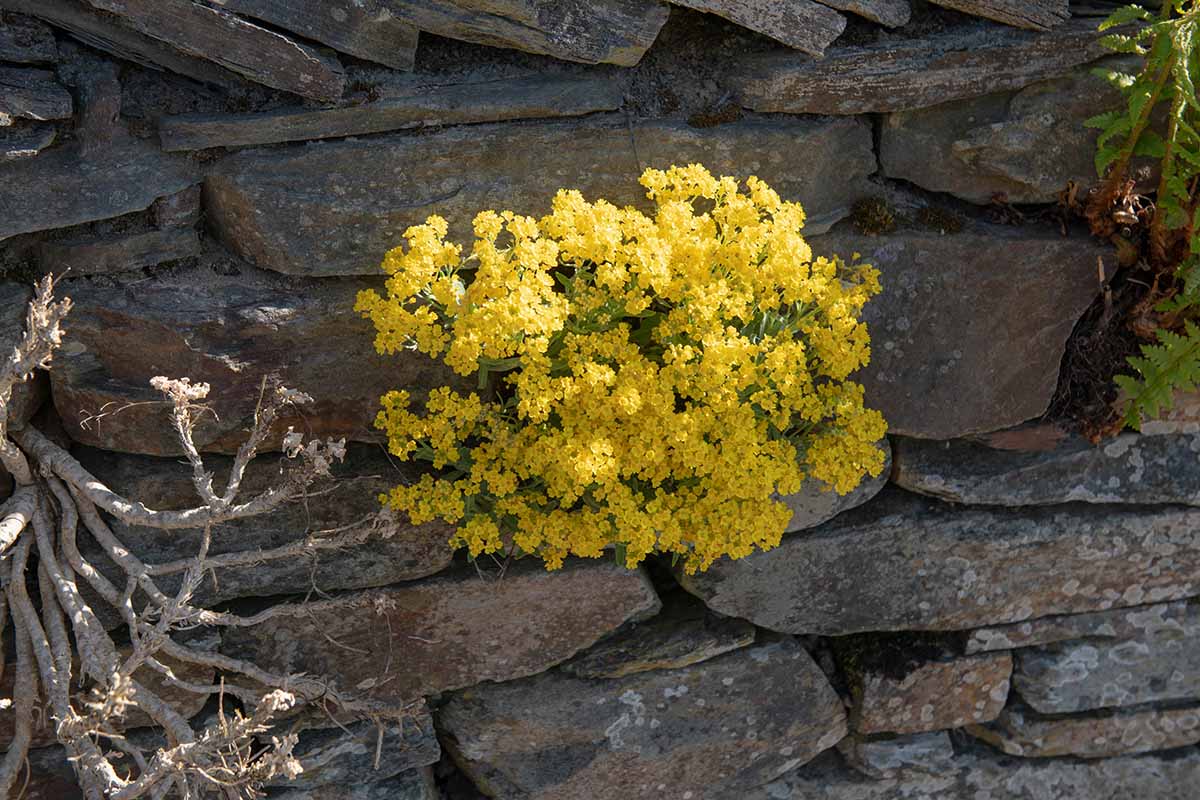
Although it might experience the occasional aphid attack, this can be dealt with quickly. If you spot an infestation, mix a few tablespoons of insecticidal soap with water in a spray bottle
Spray this mixture onto the plant thoroughly and treat it again in a few days, repeating as needed.
If the aphid infestation is severe, select a robust solution such as Captain Jack’s Dead Bug Brew, available in 16-ounce bottles of concentrate from Gardener’s Supply Company.
This spinosad concentrate will make up to eight gallons of pesticide solution.
Remember: this plant is a favorite among pollinators, so you should be sure to select a pollinator-friendly product for dealing with these pests. Captain Jack’s Dead Bug Brew is pollinator-friendly, but applying it in the evening when these bugs aren’t active is recommended.
See our guide to ridding the garden of aphids for more suggestions.
Basket of gold is not known to be particularly vulnerable to disease. However, this plant can experience root rot if overwatering occurs or if the soil has poor drainage.
Best Uses
Basket of gold is best planted in rock or gravel gardens, gardens with slopes or banks, and informal cottage gardens. It looks great in borders and beds, placed within the cracks of stone walls, or in elevated shallow containers.
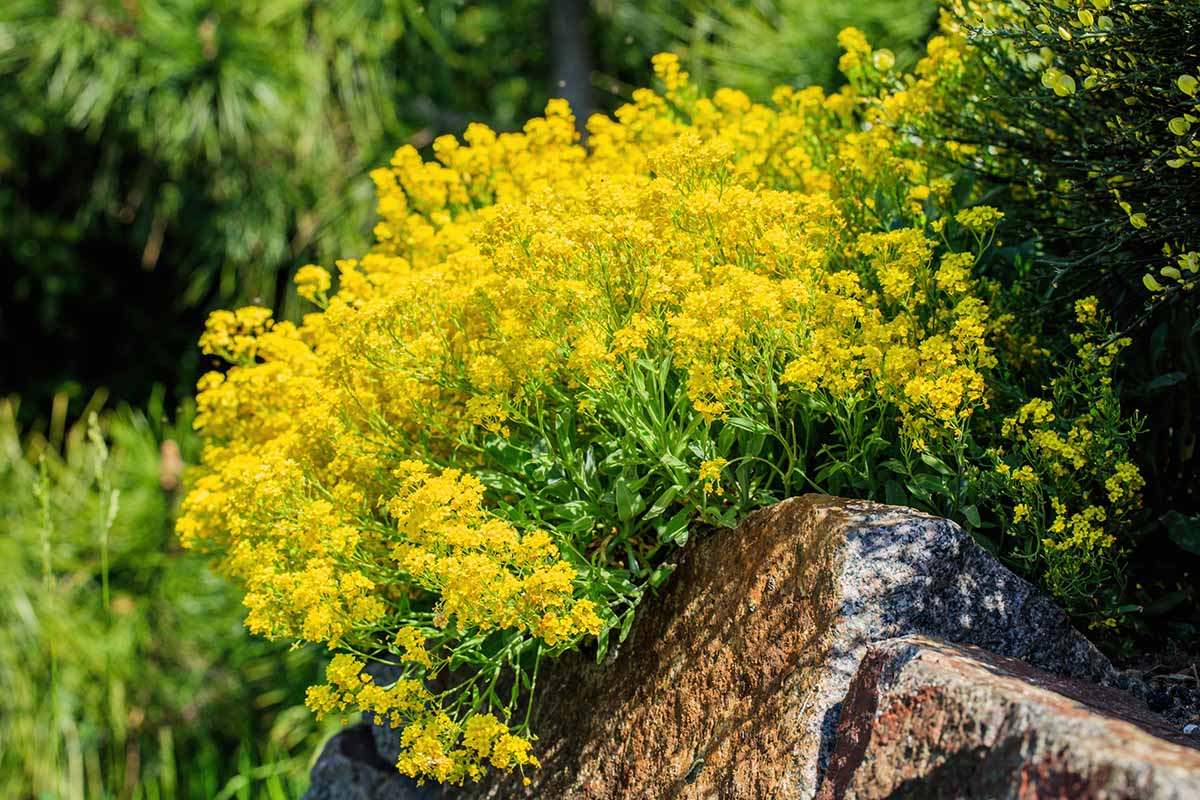
It’s also a favorite among bees, butterflies, and other beneficial garden insects, making it an excellent choice for your pollinator garden.
If you’re looking to dial up the drama in your landscape, basket of gold is an excellent candidate for planting en masse – I promise you it will be worth it!
Quick Reference Growing Guide
| Plant Type: | Evergreen flowering perennial | Flower / Foliage Color: | Brilliant yellow, creamy yellow, yellow apricot/green, olive green |
| Native to: | Europe | Tolerance: | Dry soil, drought, shallow soil |
| Hardiness (USDA Zone): | 3-7 | Maintenance | Low |
| Bloom Time: | Spring | Soil Type: | Poor, sandy, rocky |
| Exposure: | Full sun (part sun in hot climates) | Soil pH: | 5.0-8.0 |
| Time to Maturity: | 2-5 years | Soil Drainage: | Well-draining |
| Planting Depth: | Surface (seed) depth of root ball (transplants) | Attracts: | Bees, butterflies, moths |
| Spacing: | 4 inches | Companion Planting: | Drought tolerant plants, ornamental grasses, succulents, creeping phlox, yarrow |
| Height: | 6-12 inches | Avoid Planting With: | Species with high to moderate water needs |
| Spread: | 12-18 inches | Uses: | Borders, slopes or banks, rock gardens, informal cottage gardens, pollinator gardens |
| Water Needs: | Low | Family: | Brassicaceae |
| Growth Rate: | Fast | Genus: | Aurinia |
| Common Pests and Diseases: | Aphids; root rot | Species: | Saxatilis |
Here We Grow!
Basket of gold is a gorgeous perennial that thrives in rocky, poor soil with exceptional drainage. You’ll want to plant yours in full sun, because that’s where it will thrive!
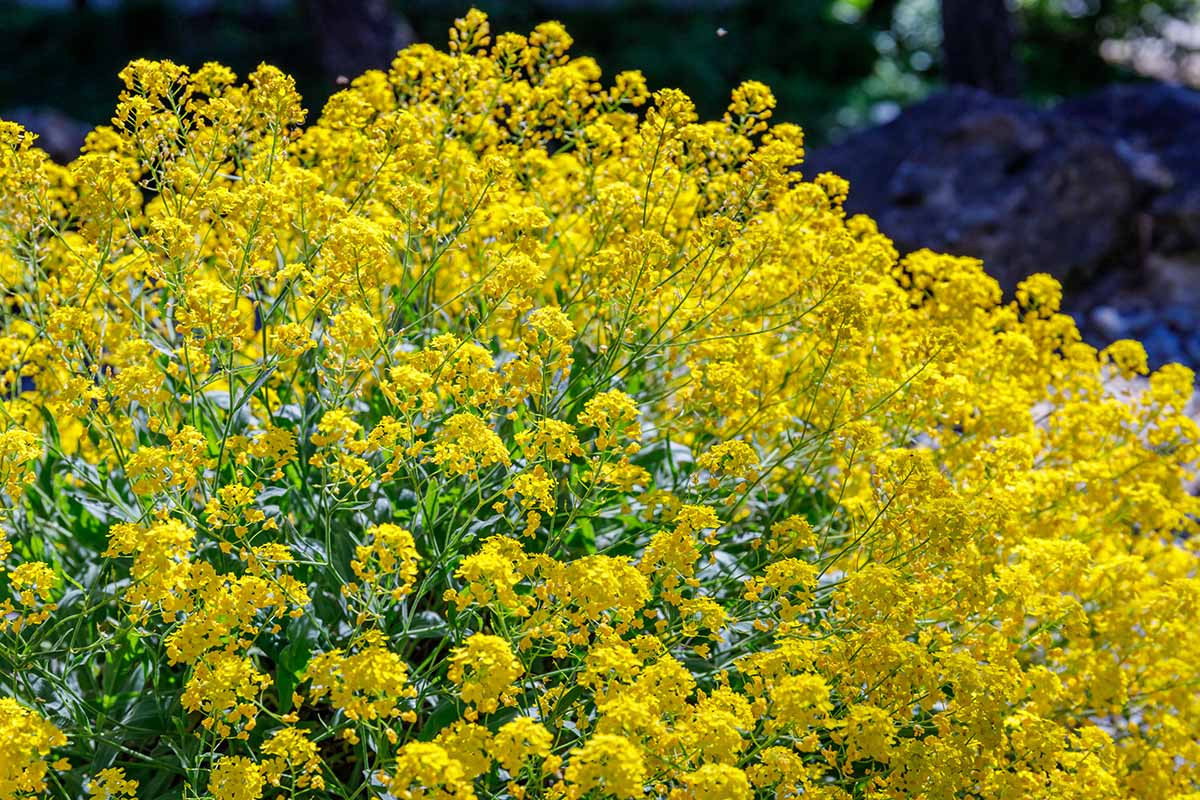
When in bloom during spring, it will attract friendly bees, butterflies, and other beneficial bugs to your garden.
This plant is incredibly low maintenance and requires minimal pruning unless desired. However, if you’d like to maintain a compact and rounded look, cut your A. saxatilis back hard in the fall.
It has no known vulnerabilities to disease and is deer resistant, although it is susceptible to aphids and root rot.
Give this plant a grow! You’re now well on your way to growing a basket of gold filled with sunshiny flowers within your own landscape.
I’d love to hear from you in the comments – feel free to share your photos if you’re growing your own, and reach out if you have any questions.
And for more information about growing flowers in your garden, check out these guides next:
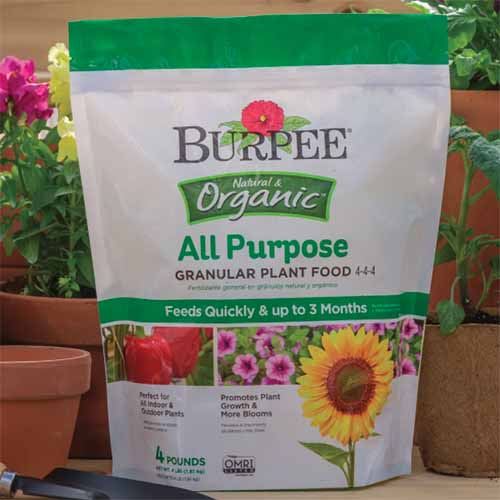
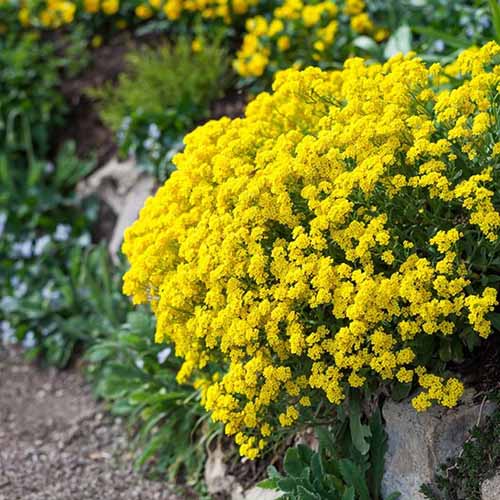
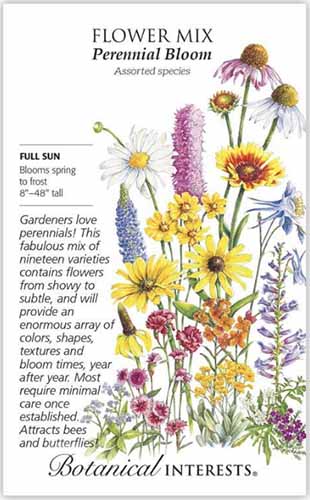



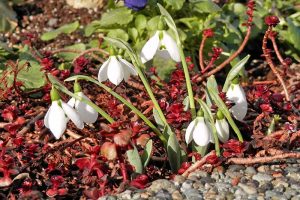
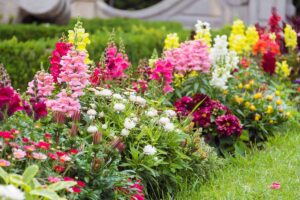
Can I plant seeds now? Mid – June — or will the seeds I harvested be ok for next Spring?
The seeds should be fine for sowing next spring if you keep them in a cool, dry location. It might be a bit late for sowing now, depending on your location.
Can i start Basket of Gold seeds indoors in February or direct sow in spring?
Hello, Cindy!
You can start the seeds indoors 6-8 weeks ahead of your area’s last frost or sow them in the ground or outdoor containers after all danger of frost has passed in the spring.
There are more directions for planting from seed in the “Propagation” section, above. Good luck, and please let us know how it goes.